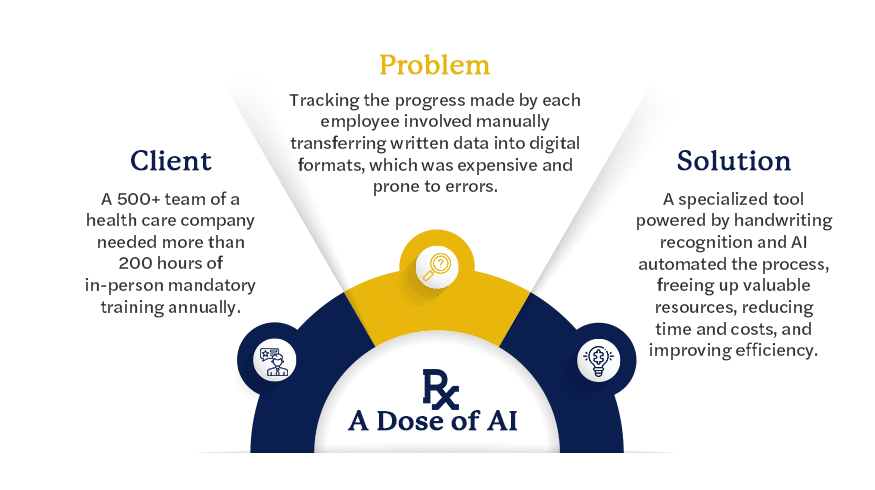Home » Services » Automation » Make data talk with intelligent automation

Unstructured data drives most decisions
Tracking the gains
A couple of real-world cases help illustrate how those technologies drive efficiencies. A health care company needed to constantly train and retrain its staff throughout the year. Its 500+ team needed more than 200 hours of in-person training annually, and these training sessions were mandatory. But to track these training sessions, the progress made by each employee across geographies and time zones and transferring written data into digital formats required human intervention. Think of entire teams of employees updating the online database manually after going through attendance sheets filled in by hand.
A specialized tool powered by handwriting recognition and AI, enabled the company to automate the process, freeing up valuable resources, while lowering time costs and improving efficiency. In another instance, a large financial services company used a secure AI chatbot to help its employees — investment advisors and traders — deal with technology and software-related issues. This AI chatbot would collect data on the number and types of issues (quantifiable and structured), as well as the sentiment change caused by the issues (qualitative and unstructured).
After two months of collecting data, they learned that their employees were not happy using some of the features and applications. While the IT team felt the issues were within acceptable service levels, the unstructured data pointed out areas that needed urgent solutions. This real-time sentiment analysis provided better insight into challenges faced by the employees and helped the company's management focus on the areas that needed addressing. It helped them solve an issue that if left unresolved would have led to increased employee frustration. But that is not the only victory for unstructured data here.
The interactions with the AI also allowed the financial services company to understand what made its employees happy, and when they were happy, helping them do more for their team. Content that was broadcast to the entire network via the AI chatbot was analyzed thoroughly, and the sentiment gains alone made the whole effort worth the time and investment.
Contact
Our experts can help you find the right solutions to meet your needs.
Get in touch
